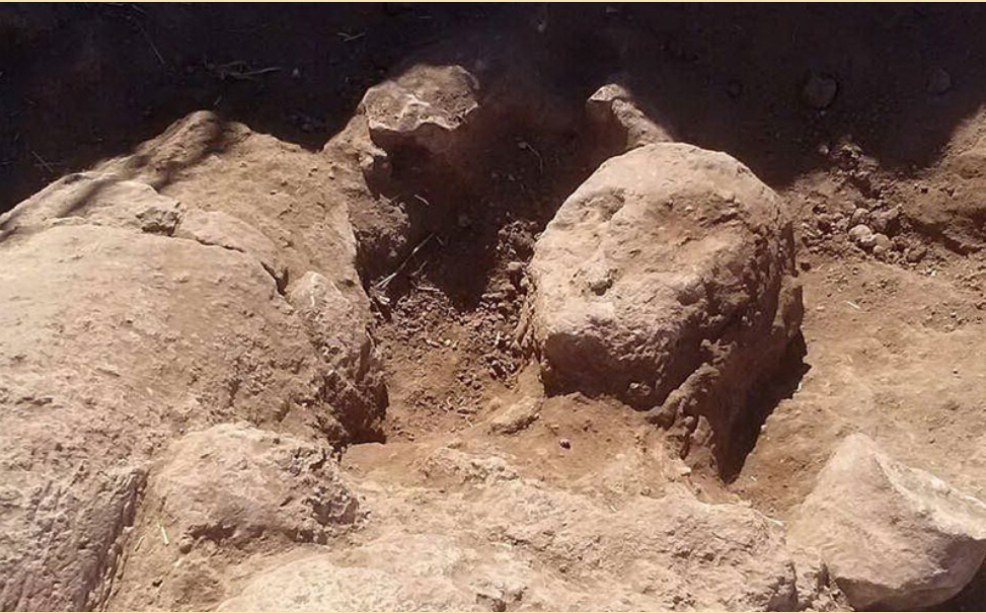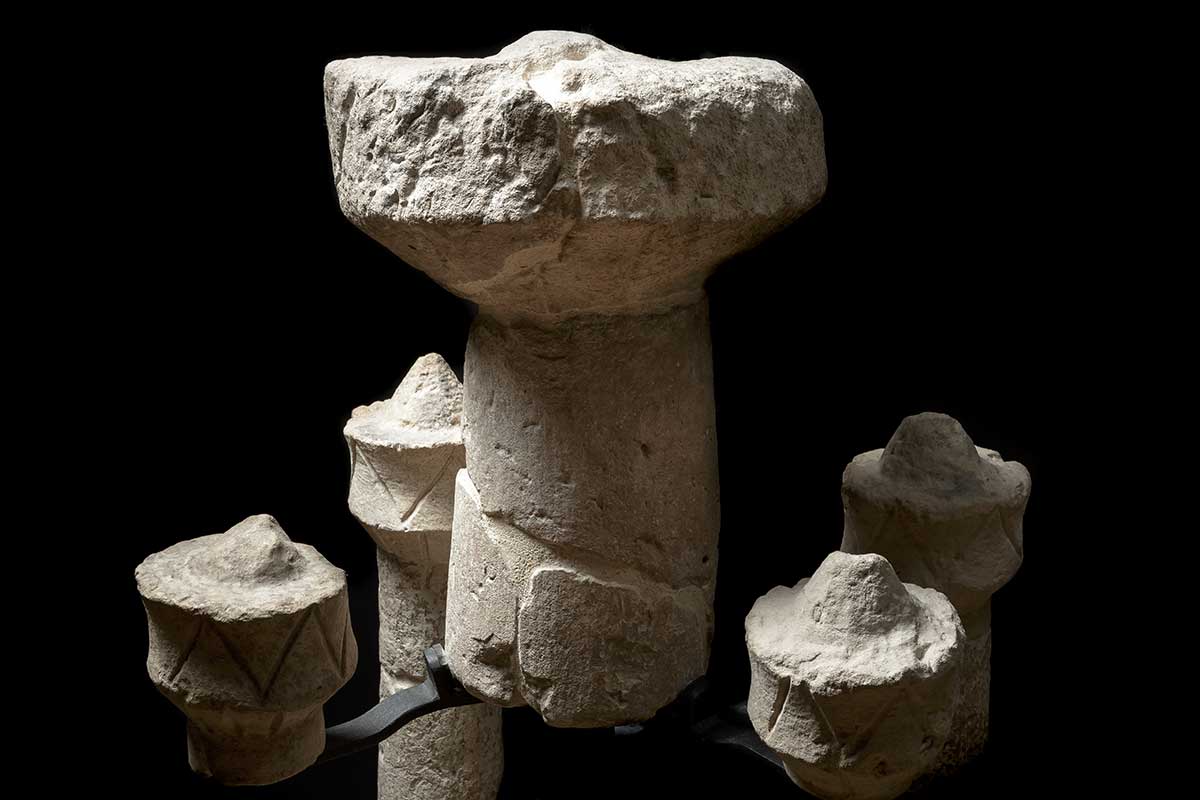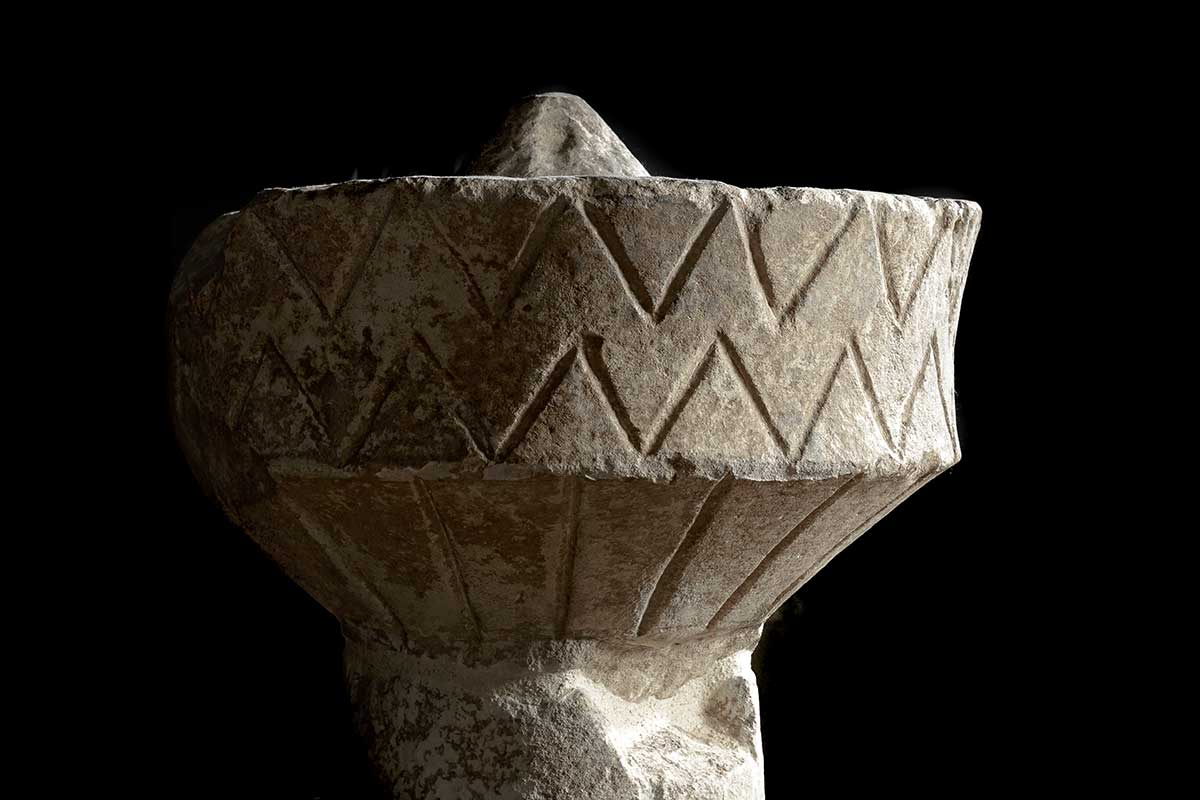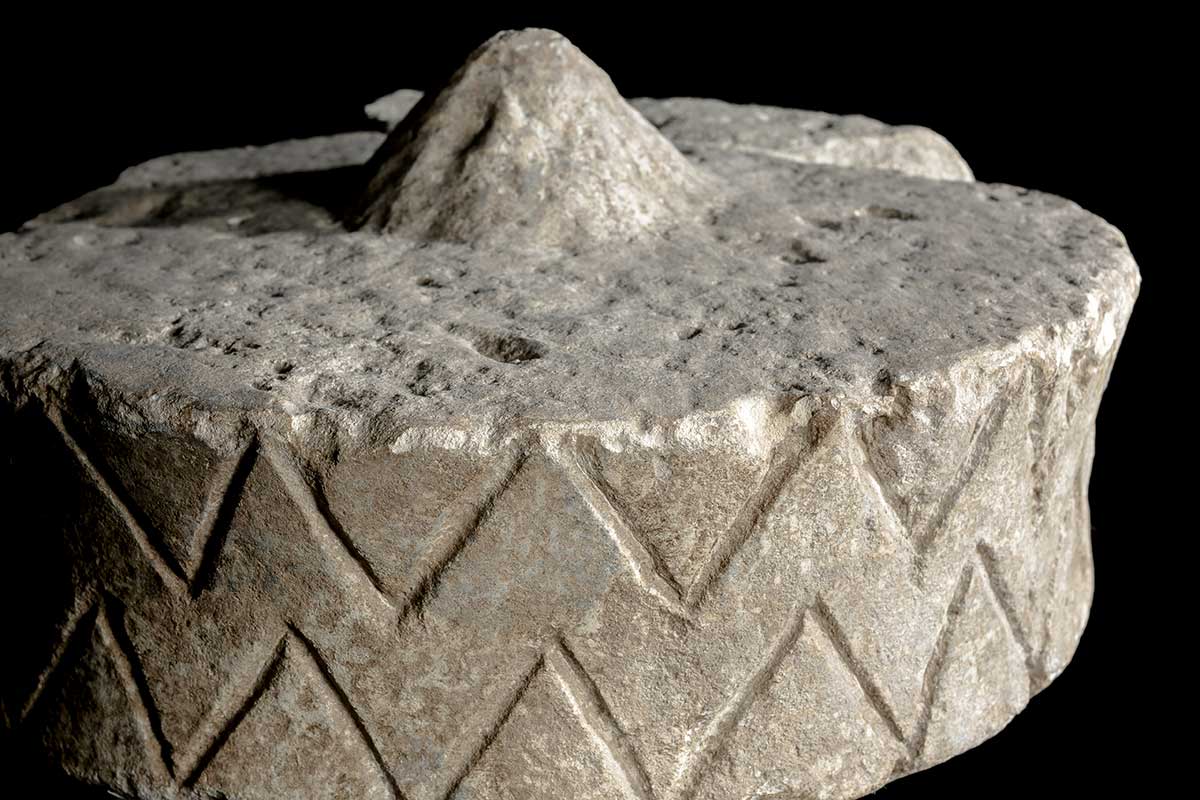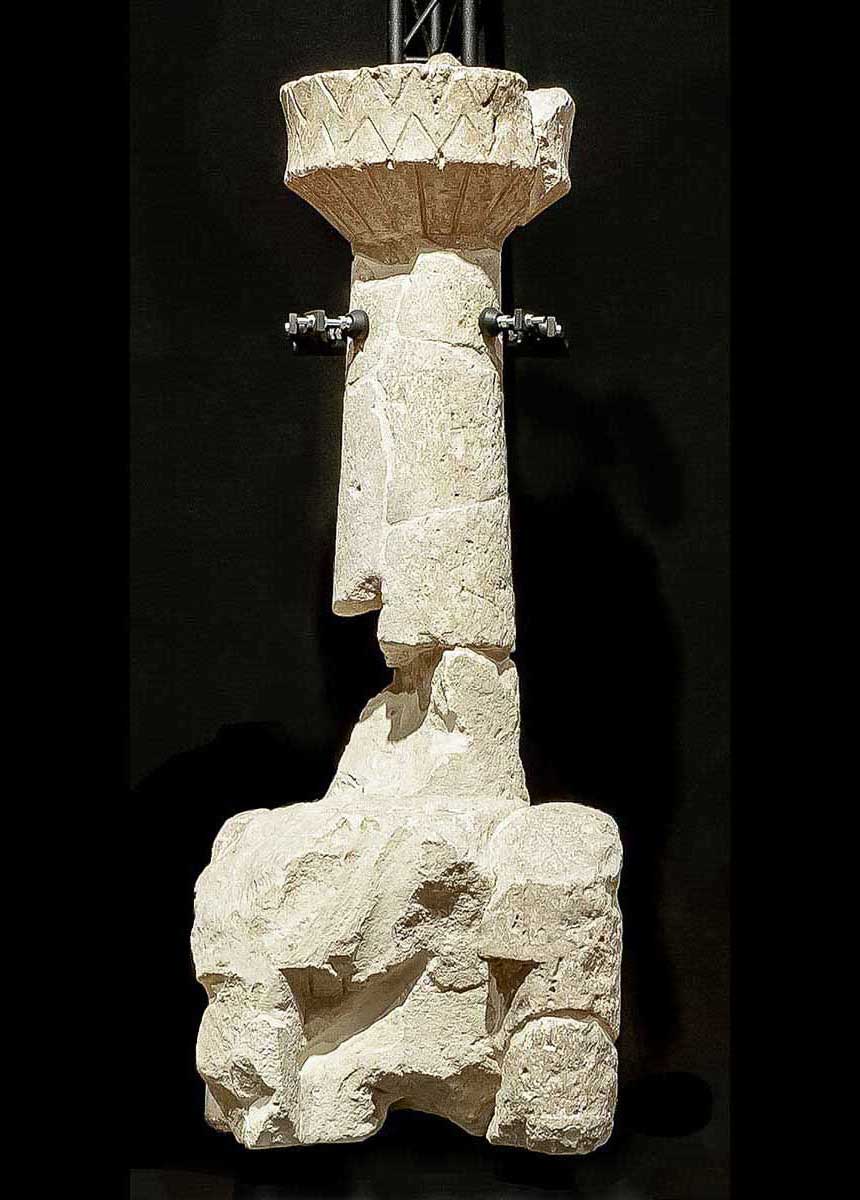Models of nuraghes and betyls
At Mont’e Prama, excavations have brought to light numerous and large models of nuraghes in limestone, single-tower and complex: bi-lobed, three-lobed, four-lobed, eight-lobed depending on the number of towers enclosing the central keep.
The models of nuraghes were already known, as examples had been found at several different sites (e.g. in the Palmavera nuraghe near Alghero, in the sanctuary of Santa Vittoria di Serri, in the Su Nuraxi nuraghe of Barumini, in the Bia ’e Decimu locality at San Sperate, and in the countryside of San Vero Milis).
These other finds include stone sculptures, in limestone or sandstone, and also models in terracotta or bronze. These examples are not detailed, but are instead schematic depictions highlighting the peculiar aspects of the nuraghe.
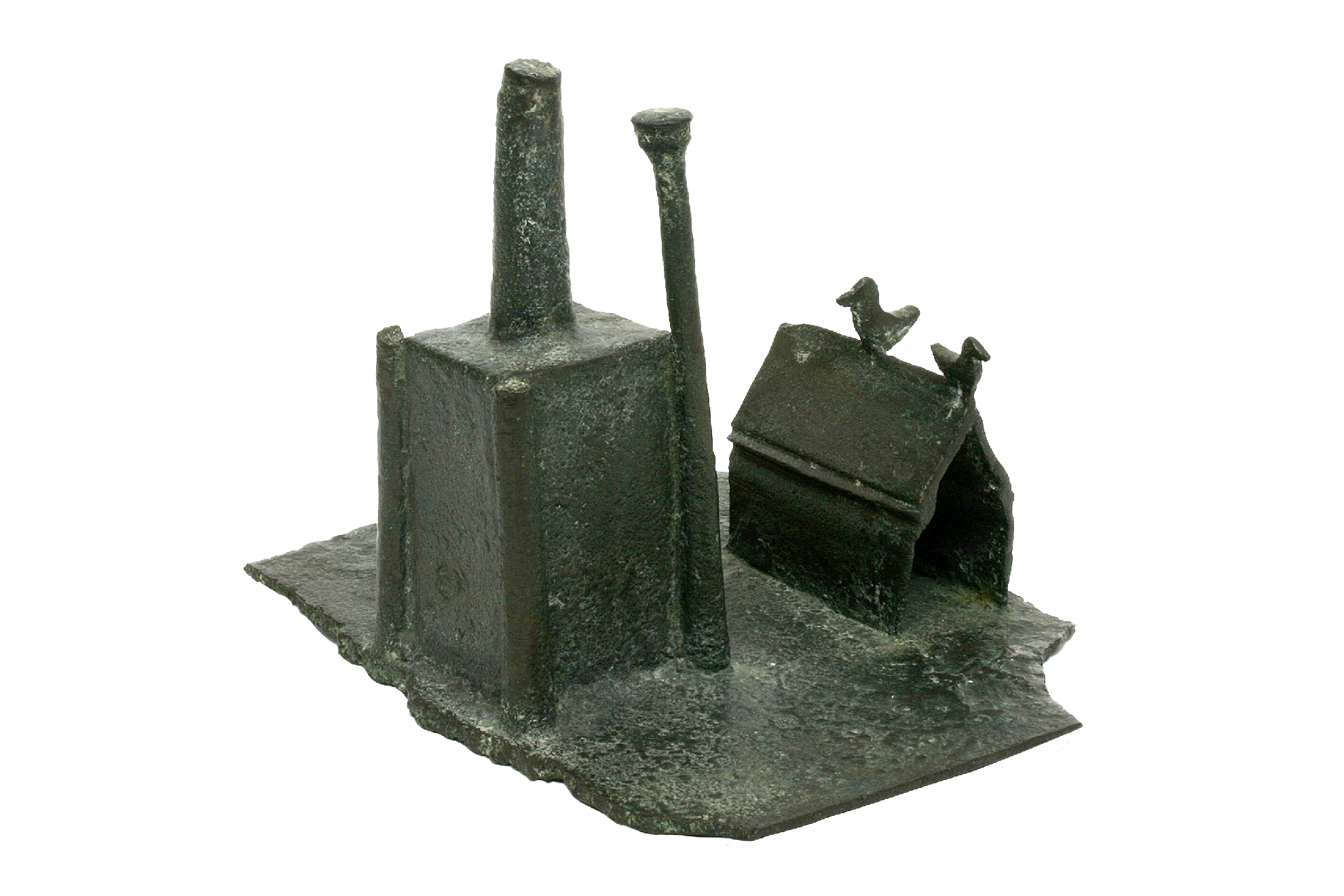
It is interesting to note that no real-size nuraghes with eight lobes – i.e. with eight perimeter towers round the main one – actually exist. Evidently the models showing this design are not faithful reproductions of real structures, but representations increasing the number and height of the towers to celebrate the might of these structures.

Betyls
The betyls are abstract stone sculptures in truncated cone shape, interpreted as symbolic representations of a divinity. They are some of the first stone elements found at the site.
The betyls are common elements in burials of the Nuragic period.
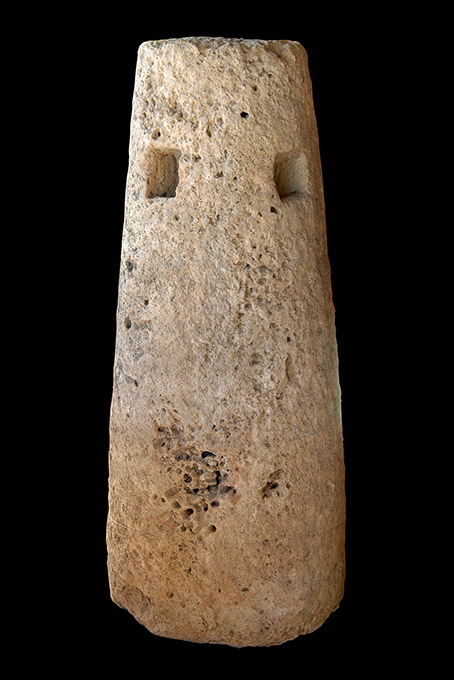
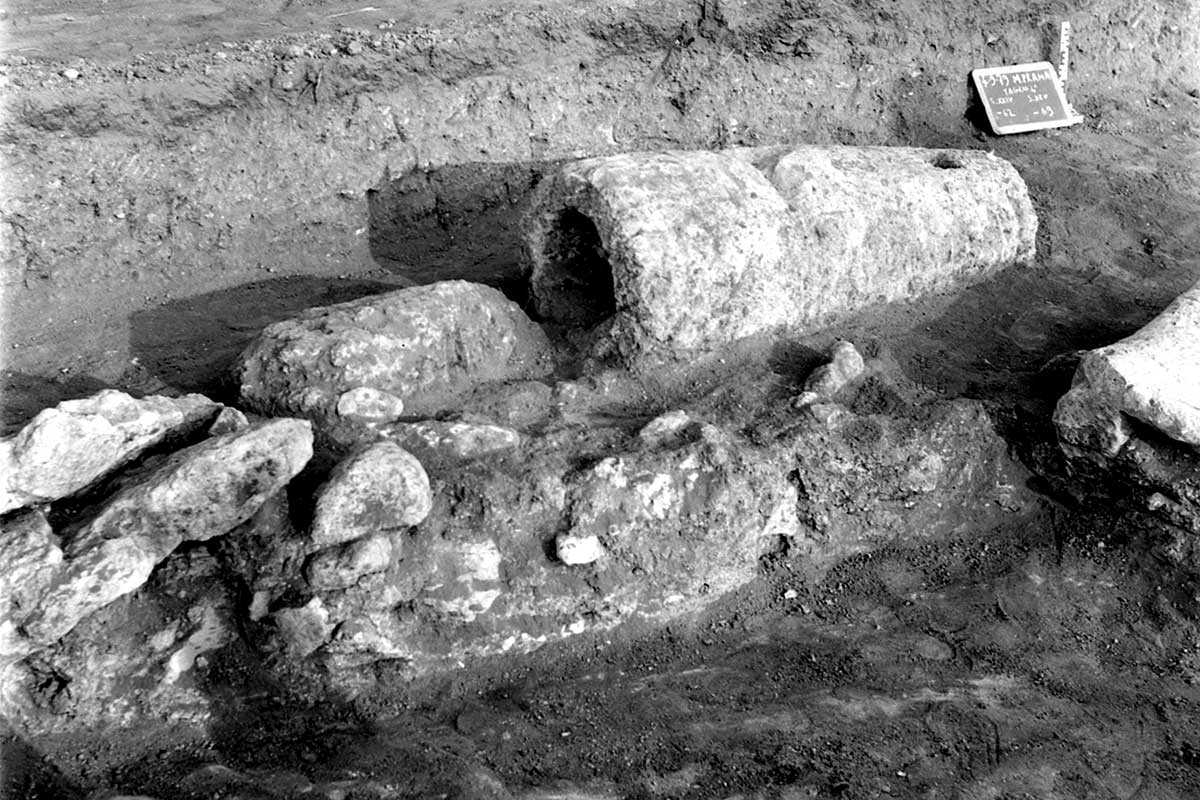
The betyls of Mont’e Prama are mostly in sandstone, a stone different from the limestone of the statues found in the area.
The name ‘betyl’, from the term bet-el, means ‘house of God’. It is generally an oblong worked stone, with roughly circular cross section, and with pointed or flattened top summit.
Many specimens of sandstone and limestone betyls have been reassembled so far, but many fragments many fragments are still missing and presumably still on site, while others are in storage.
Their top is flattened and slightly beneath it are small square holes arranged in one or two lines.
Some scholars consider them to be more ancient than the statues of human forms and thus speculate that they were moved from more ancient ‘tombs of the giants’ (collective chamber tombs) dating from the Bronze Age, at the time the necropolis-sanctuary was built. Others suggest that these betyls were made from a different kind of stone on purpose for these graves. Be as it may, these carved stones, set up next to the tombs to mark them out, were presumably intended to signify the significance of the area and celebrate the dead, presumably members of the aristocratic class for whom single tombs were reserved.




